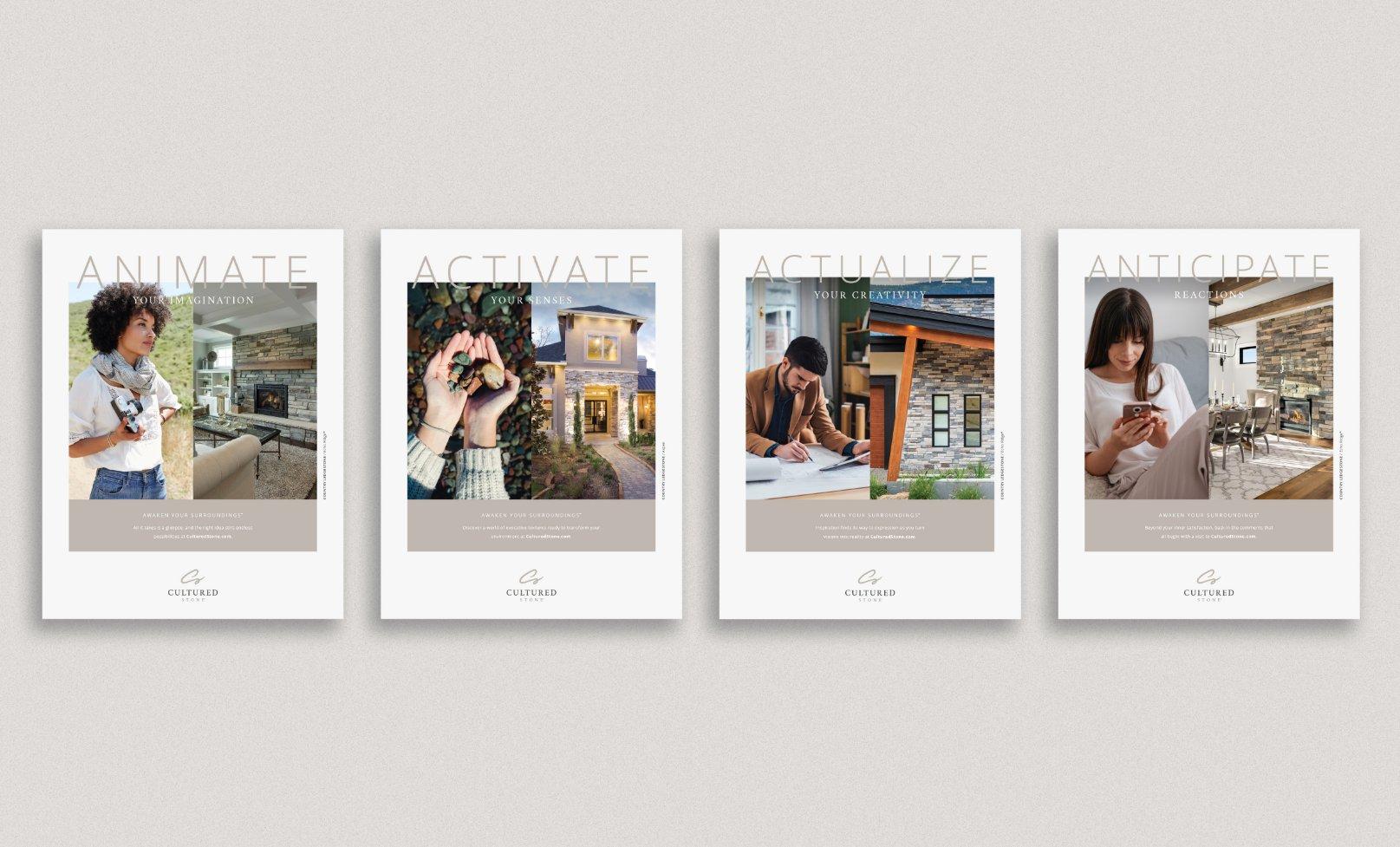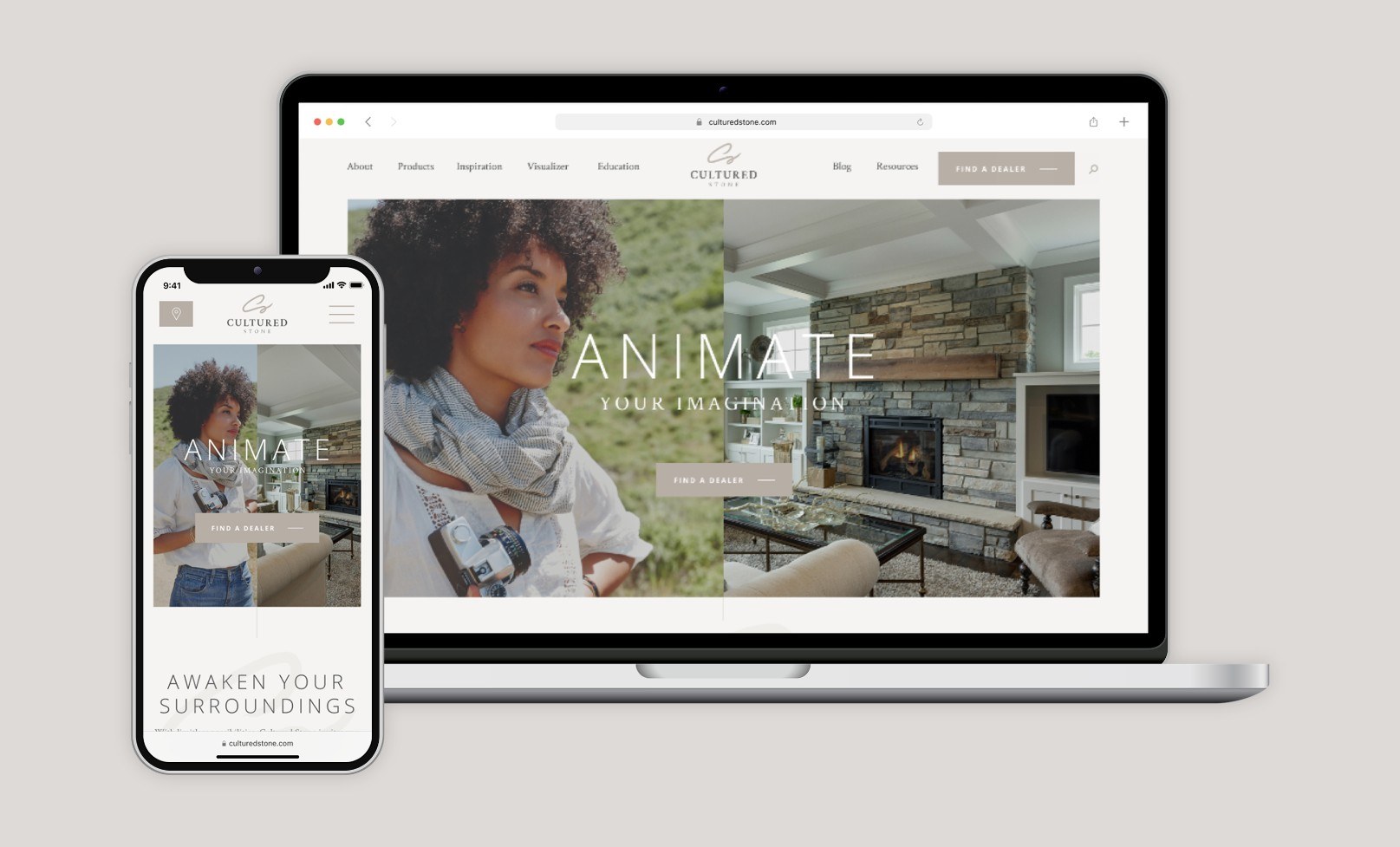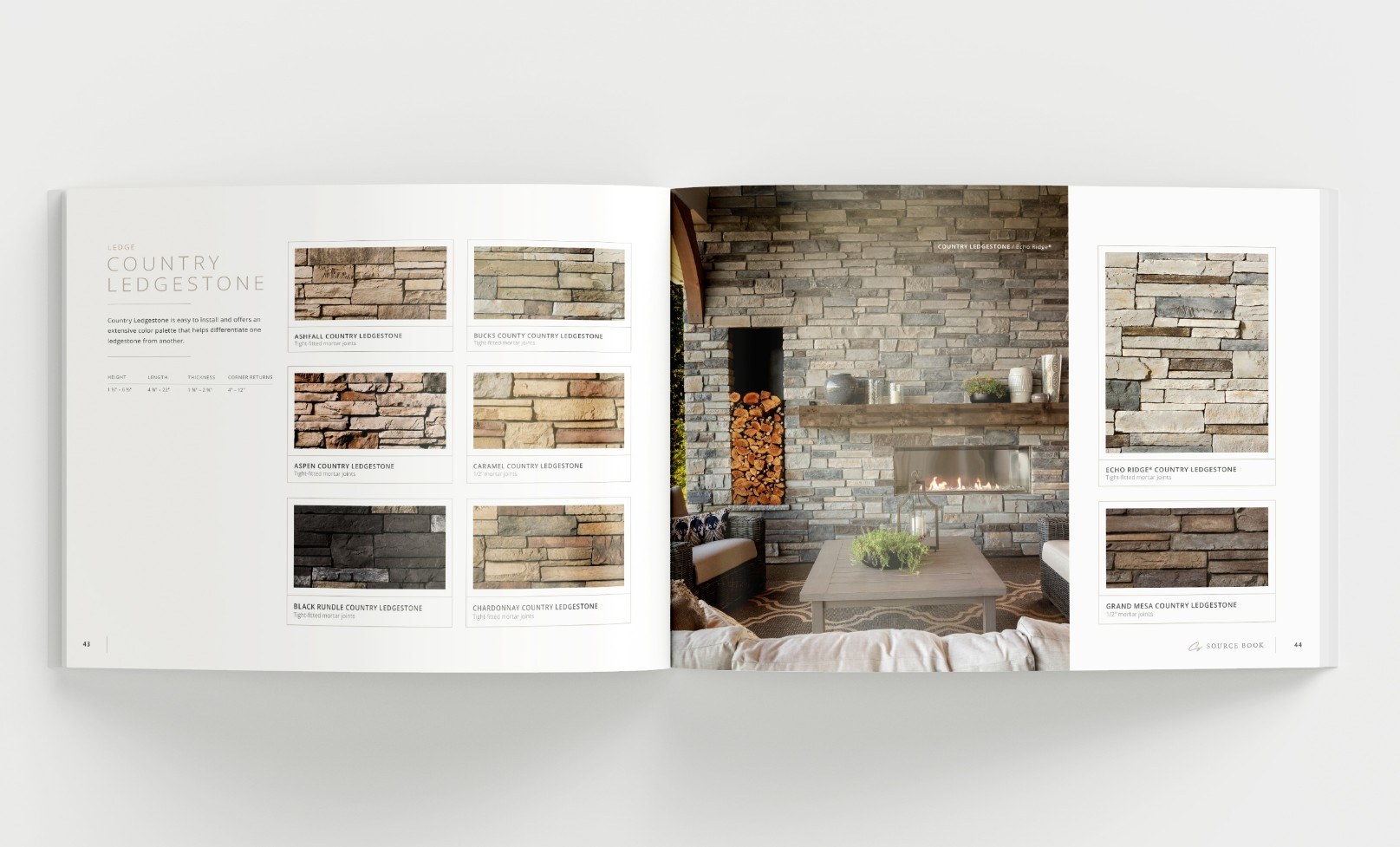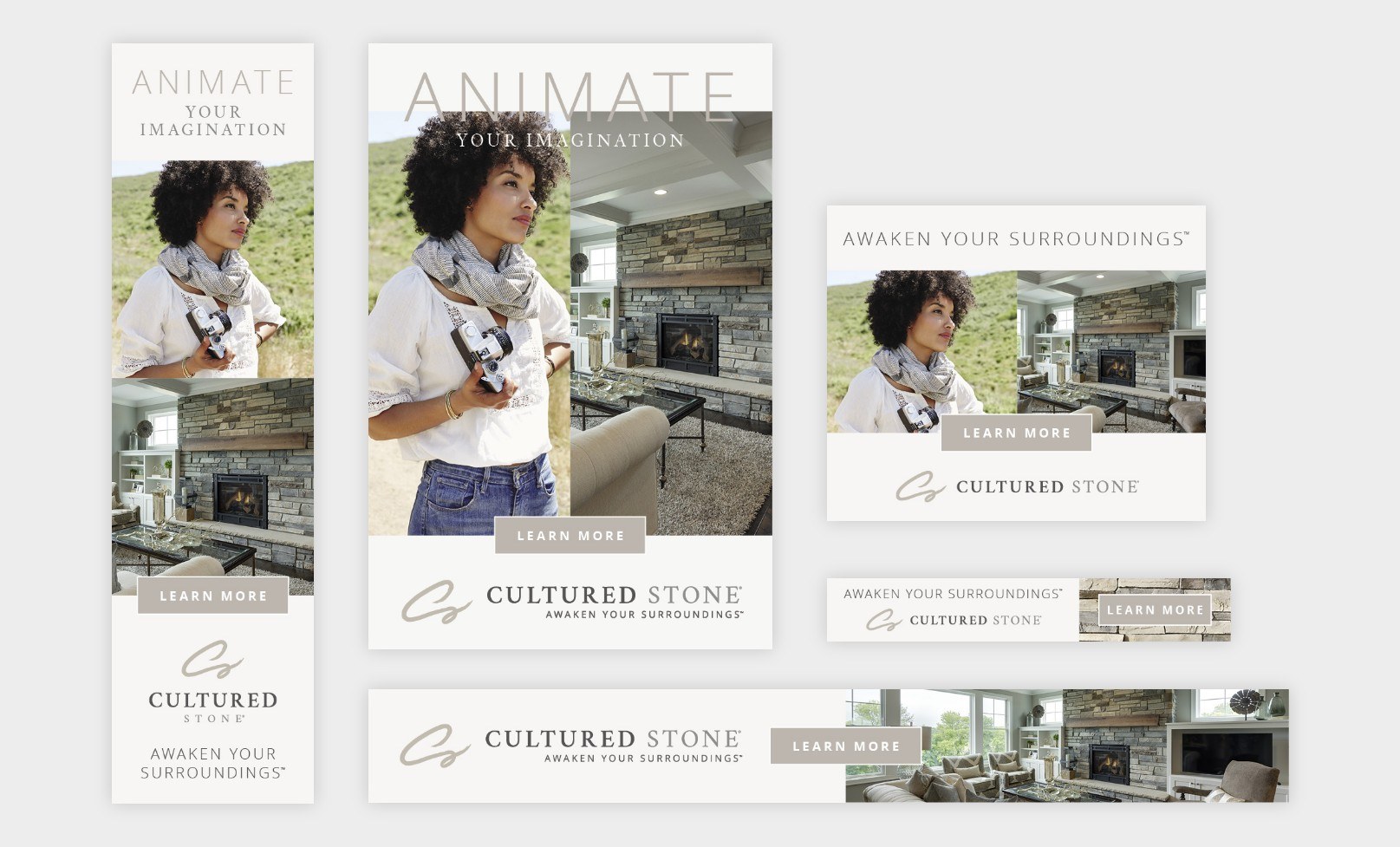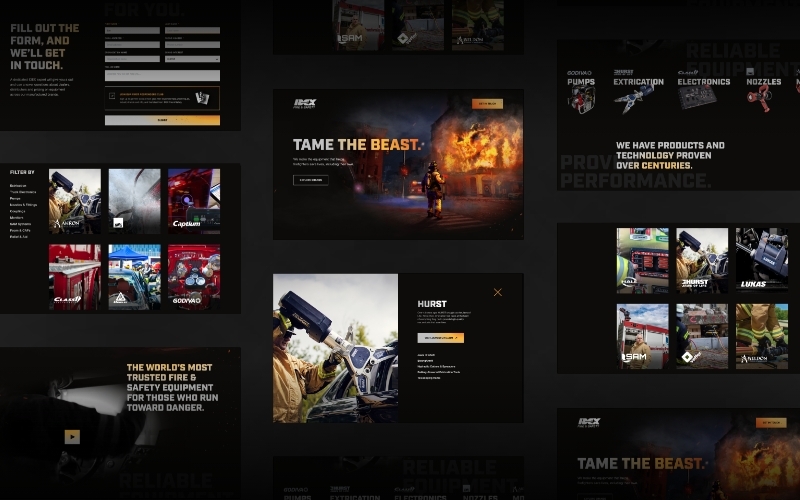Creative
Brand Strategy

A brand refresh is a delicate process that can lift your company to new heights or historic lows. When done well, it can revitalize your brand in a way that touches your customers emotionally. When done poorly, it can cause a disconnect that pushes customers away from you and into the embrace of your competitors.
Cultured Stone®, a manufacturer of architectural stone veneer featuring authentic hues and natural textures, asked Wray Ward to help develop an identity that harkened back to the company’s 60-year-old roots while still relating to a modern audience. Their current branding wasn’t resonating with customers or the industry, and they believed a reimagined identity could showcase the company’s rich history and what it stands for.
To discuss how these changes can bring back the values of the past in a fresh, new way, we talked with:
Crysta Hailes, senior director of marketing, Westlake Royal Stone Solutions (Cultured Stone’s parent company)
Sarah Lograsso, director of marketing and product design, Westlake Royal Stone Solutions
Charlie Elberson, insights and brand strategy senior director, Wray Ward
Heather Dumford, creative director, Wray Ward
Why did Cultured Stone consider a brand refresh?
Crysta Hailes: The last time we went through a brand refresh, it didn’t seem like our customers connected with the new look and feel, so we took a step back to figure out why. We needed to reinvigorate our image to be modern, while still paying homage to where we’ve been. Our industry evolves rapidly on architecture, color, fashion trends and more, and it felt like [Cultured Stone] had fallen behind.
Sarah Lograsso: Over the last few years, the company went through many changes and acquisitions. Deep down, we knew we needed to do something different. A brand refresh could tell our story in a much bolder way, but we needed to muster the courage to say, “Let’s do it.”
What did Cultured Stone hope to achieve through this process?
Sarah: Ultimately, we wanted to capture the original essence of the Cultured Stone brand. We needed to get away from static representations and tell the true story of the brand’s purpose: unlocking the potential of creativity and the human experience. Accomplishing this required us to portray a timeless brand personality, one that people gravitate to.
We gave Wray Ward a tall order, but they proved their worth through the entire process.
Charlie Elberson: After we heard Cultured Stone’s legacy story, we understood: They’re an originator of an entire design category, and a brand refresh would need to stay true to this rich heritage. As we dug deeper, we realized there is a lot of passion for the brand, both internally and in the industry. We wanted to create a new, fresh appeal for the brand by honoring that truth and the passion within. To succeed, we had to understand what that really meant on a human level; it’s about human experiences people have had with Cultured Stone. We had to ask ourselves, “How do we get deeper into the hearts and minds of consumers to strike a chord that resonates with what they want?”
Heather Dumford: Crysta, Sarah and the Cultured Stone team helped immensely, as they already lived and breathed this new passion. This, in turn, helped Wray Ward better understand the Cultured Stone vision. The team’s devotion to the brand is what helped make this project a success. They always responded to our creative options with their emotions first. They approached it from a perspective of passion, and that led to success in finding something that is true to the brand.
Charlie: Yes, that’s an important aspect of any project like this. Clients get the most out of an agency when they go deeper and respond to what they’re seeing in an honest way. They know what they want and are even willing to challenge us, their agency partner, to get there. When a client is responsive and involved, they always get their money’s worth.
What aspects go into refreshing a brand while tapping into its original identity?
Sarah: Over the years, as our brand evolved, we realized the truth of who we are as a company wasn’t easy to understand. During this process, we had to stop and ask ourselves, when our company started in 1962:
What was our goal?
What were our founders truly after?
What did we stand for?
How can we reflect those values in a voice that feels modern and fresh?
It was important to bring back the brand’s legacy and why it was so valuable to an entire industry when it started. We needed to consider both the products and the experience and bring it all together. Ultimately, it came down to reviving our legacy and making it feel relevant for today’s market.
